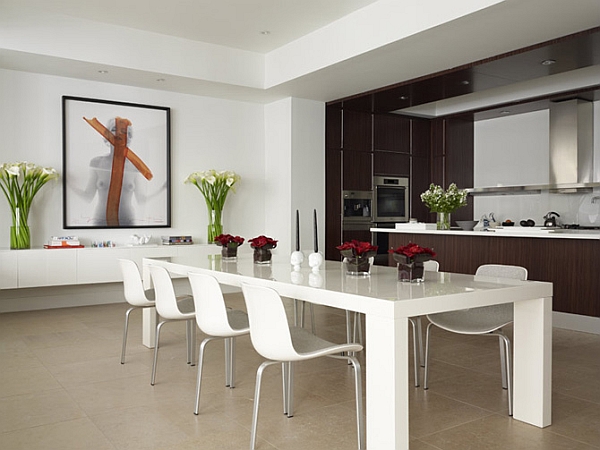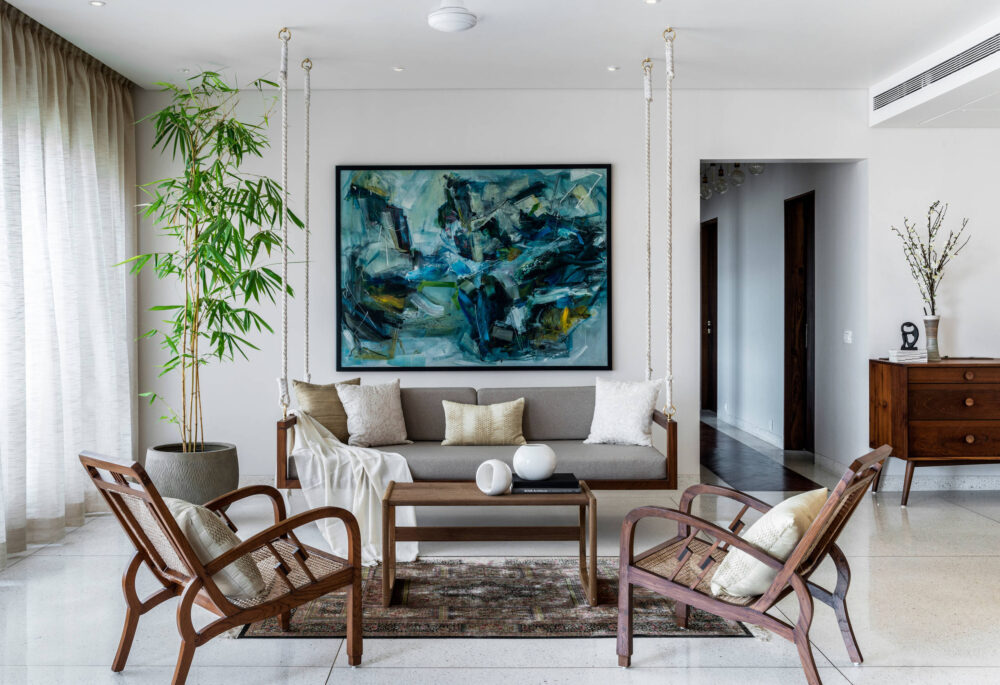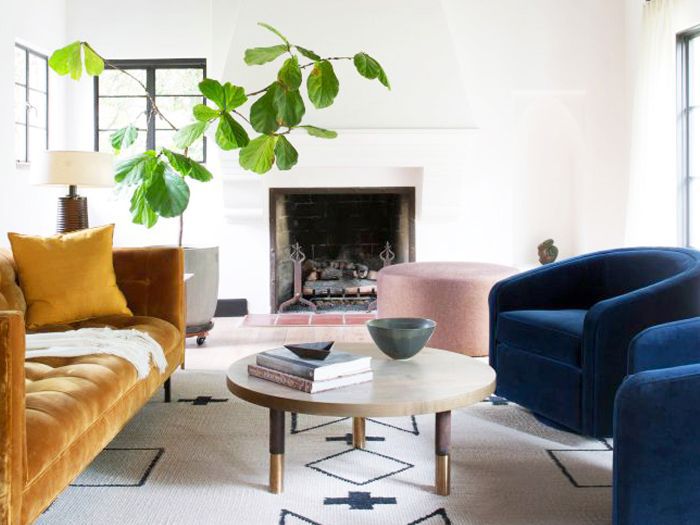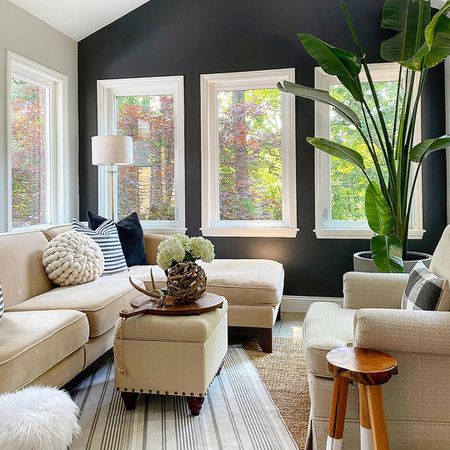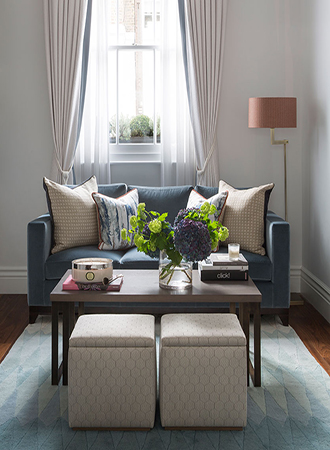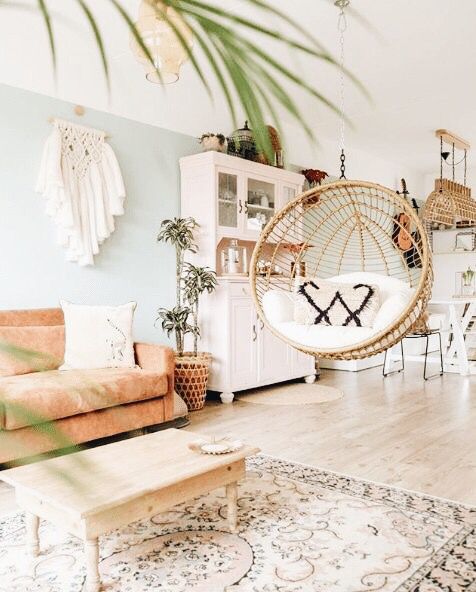A modern and contemporary dining room with light wood flooring can create a warm and inviting atmosphere while still looking stylish and sophisticated. Here are some design ideas to consider:
-
Embrace minimalism: Modern and contemporary design often emphasizes clean lines, simplicity, and a neutral color palette. Keep your dining room clutter-free and avoid adding too many decorative elements. Choose a minimalist dining table and chairs with a simple design.
-
Use bold colors: Add a pop of color to your dining room with bold accents, such as a colorful rug, artwork, or decorative pillows. Choose colors that complement the light wood flooring, such as deep blues, greens, or warm earth tones.
-
Mix and match furniture: Mix and match different dining chairs around your table for a more eclectic look. You can choose chairs with different textures, colors, or materials to create a unique and personalized dining room.
-
Add texture: To prevent your dining room from looking too sterile, add texture with a natural woven rug, textured curtains, or patterned wallpaper.
-
Incorporate natural elements: Bring the outdoors inside by adding plants, flowers, or a natural wood centerpiece. This will add warmth and life to your dining room while complementing the light wood flooring.
-
Choose modern lighting: Lighting is an essential aspect of any dining room, and modern lighting fixtures can add a spice of elegance to your space. Consider a sleek pendant light or a minimalist chandelier to complete the look.
Illuminating the Future: Sustainable Lighting Solutions
Remember, the key to creating a modern and contemporary dining room with light wood flooring is to balance simplicity and warmth. Keeping the design simple and incorporating natural elements allows you to create a stylish and inviting space for your family and guests.
Types of Modern Lighting available for Dining Rooms
Modern lighting can add a touch of elegance and style to your dining room. Here are some types of contemporary lighting options that are available for dining rooms:
-
Pendant Lights: Pendant lights are a popular choice for modern dining rooms. They are suspended from the ceiling and come in various shapes and sizes, such as linear, round, or geometric. Pendant lights can provide focused lighting above the dining table, adding a stylish accent.
-
Chandeliers: Chandeliers are classic lighting fixtures that can add glamour and sophistication to your dining room. Modern chandeliers come in various styles, from minimalist designs to more elaborate and ornate styles. Choose a chandelier that complements the size and type of your dining room.
-
Track Lighting: Track lighting is a versatile and modern lighting option for dining rooms. It consists of multiple adjustable light fixtures that are mounted on a track. You can adjust the position of each fixture to direct the light to specific areas of your dining room.
-
Wall Sconces: Wall sconces are a great option to add ambient lighting to your dining room. They can be mounted on the wall in various styles and sizes. Wall sconces can also add a decorative element to your dining room.
-
Floor Lamps: Floor lamps are a flexible and modern lighting option for dining rooms. They can provide ambient lighting or focused lighting, depending on the design. Floor lamps come in various styles, such as tripod, arc, or minimalistic designs.
-
Recessed Lighting: Recessed lighting is a modern, subtle lighting option that can provide even lighting throughout your dining room. It consists of small light fixtures installed in the ceiling, creating a clean and discreet look.
Remember, when choosing modern lighting for your dining room, consider the size and style of your space. You want to select a lighting fixture that complements the overall design of your dining room while providing the right amount of light for your needs.
Top 24 Living Room Layout Mistakes to Avoid for a Functional and Stylish Space
Tips to Incorporate Natural Elements in Dining Room
Natural elements in your dining room can create a warm and inviting atmosphere. Here are some points to help you introduce natural elements in your dining room:
-
Use wood: Wood is a versatile and natural material that can add warmth and texture to your dining room. Consider adding a wooden dining table, chairs, or a sideboard. You can add wood accents through picture frames, shelving, or a wooden chandelier.
-
Add plants: Plants can bring life and color to your dining room. If you choose to add potted plants or a vase full of fresh flowers to your dining table, it can do wonders. You can also hang plants from the ceiling or add a tall plant to a corner of the room.
-
Use natural materials: Include natural materials such as rattan, bamboo, or jute in your dining room decor. Add a woven rug or placemats, a rattan pendant light, or bamboo blinds.
-
Add a natural centerpiece: A natural centerpiece such as a bowl of fruit, a vase of dried flowers, or a wooden tray with pine cones can add a natural element to your dining room. It can also be a conversation starter for your guests.
-
Choose earthy colors: Earthy colors such as greens, browns, and blues can create a natural and calming atmosphere. Consider using these colors for your dining room walls, curtains, or decorative accents.
-
Let in natural light: Natural light can create a warm and inviting atmosphere in your dining room. Consider adding sheer curtains or removing heavy drapes to allow natural light to filter in. You can also add a mirror to reflect natural light and make your dining room feel brighter and more spacious.
Remember, keeping natural elements in your dining room simple and balanced is the key to incorporating natural elements. Too many natural features can create a cluttered and overwhelming look. Adding natural elements in small doses makes a beautiful and inviting dining room that your family and guests will love.
Laundry Room Design: Ideas and Essentials for a Functional and Stylish Space
Tips for using mix-and-match furniture in Dining Room
Mixing and matching furniture in your dining room can create a unique and personalized look. Here are some points to help you use to mix and match furniture in your dining room:
-
Choose a unifying element: To create a cohesive look, choose a unifying factor such as color, texture, or style. For example, you could select chairs with a similar shape or texture but different colors or chairs with the same color but various forms.
-
Mix different styles: Feel free to mix different kinds of furniture in your dining room. For example, you could pair a traditional wooden dining table with modern chairs or a mid-century sideboard with a contemporary light fixture.
-
Use contrast: Using contrasting elements can create a visually exciting look. For example, you could pair a rustic wooden dining table with sleek metal chairs or a modern glass dining table with vintage wooden chairs.
-
Play with scale: Mixing furniture of different scales can create a sense of depth and visual interest in your dining room. For example, you could pair a small bistro table with oversized chairs or a large farmhouse table with smaller upholstered chairs.
-
Keep it balanced: When mixing and matching furniture, it’s essential to keep the overall look balanced. Choose furniture that is similar in height and scale, and make sure that the different pieces go with each other rather than compete for attention.
-
Add accessories: Accessories such as cushions, table runners, and placemats can help tie different pieces of furniture together. Choose accessories that complement the colors and textures of your mix-and-match furniture.
Remember, the key to using a mix and match furniture in your dining room is to be creative and have fun with it. By combining different styles, colors, and textures, you can create a dining room that is truly unique and reflects your style.
